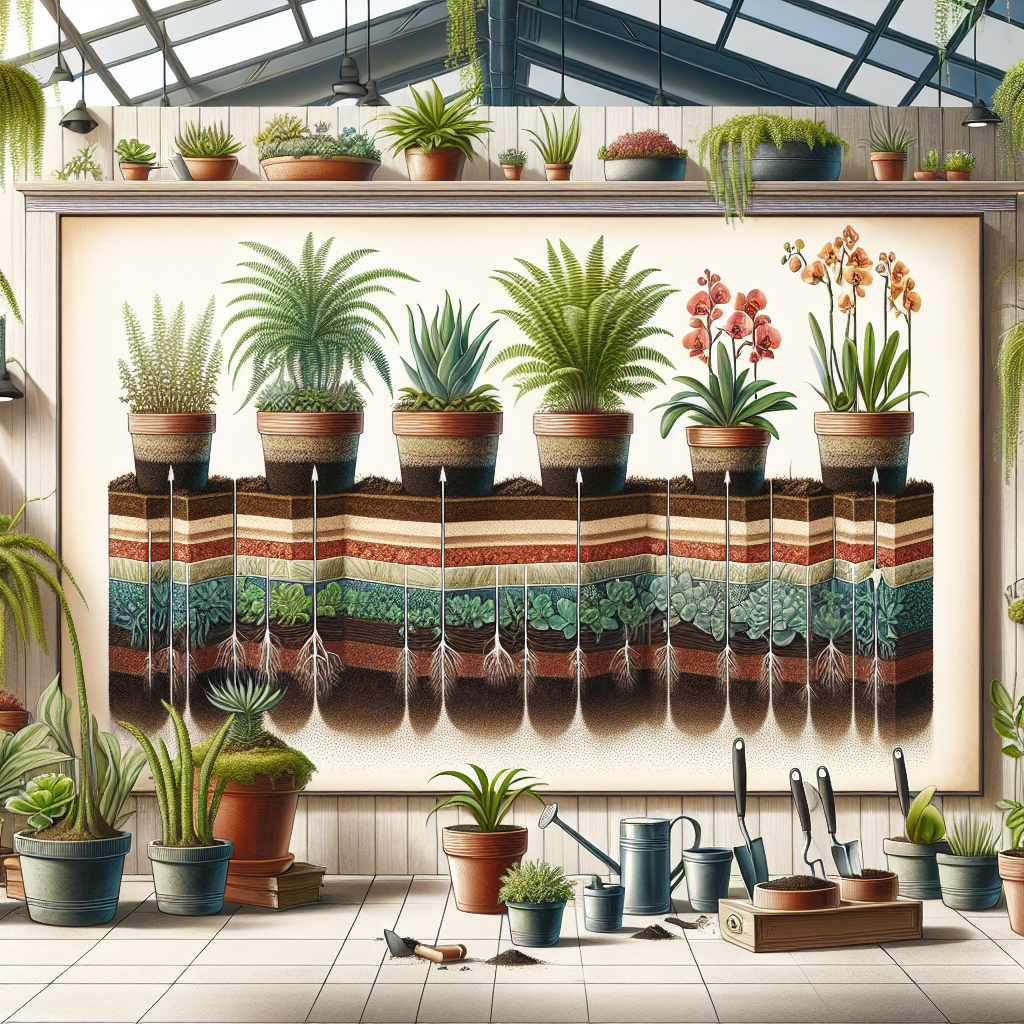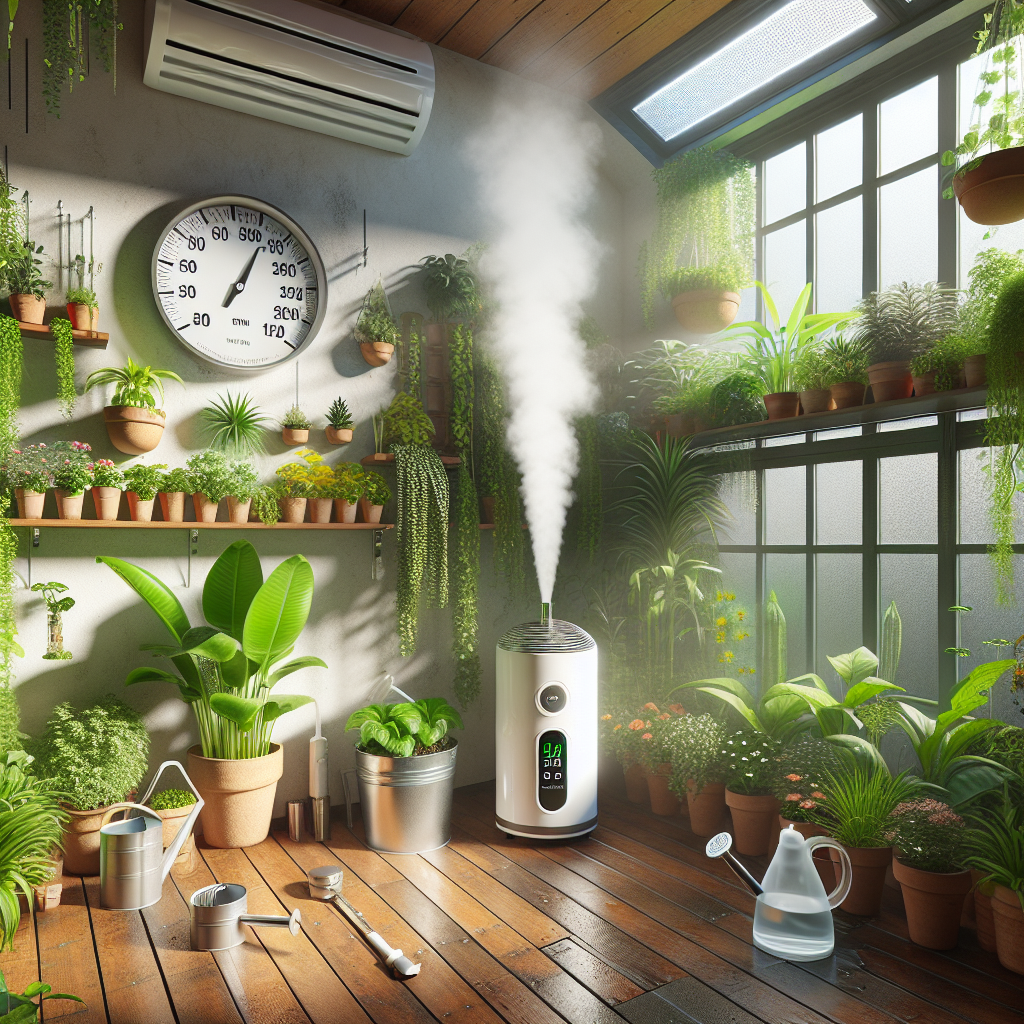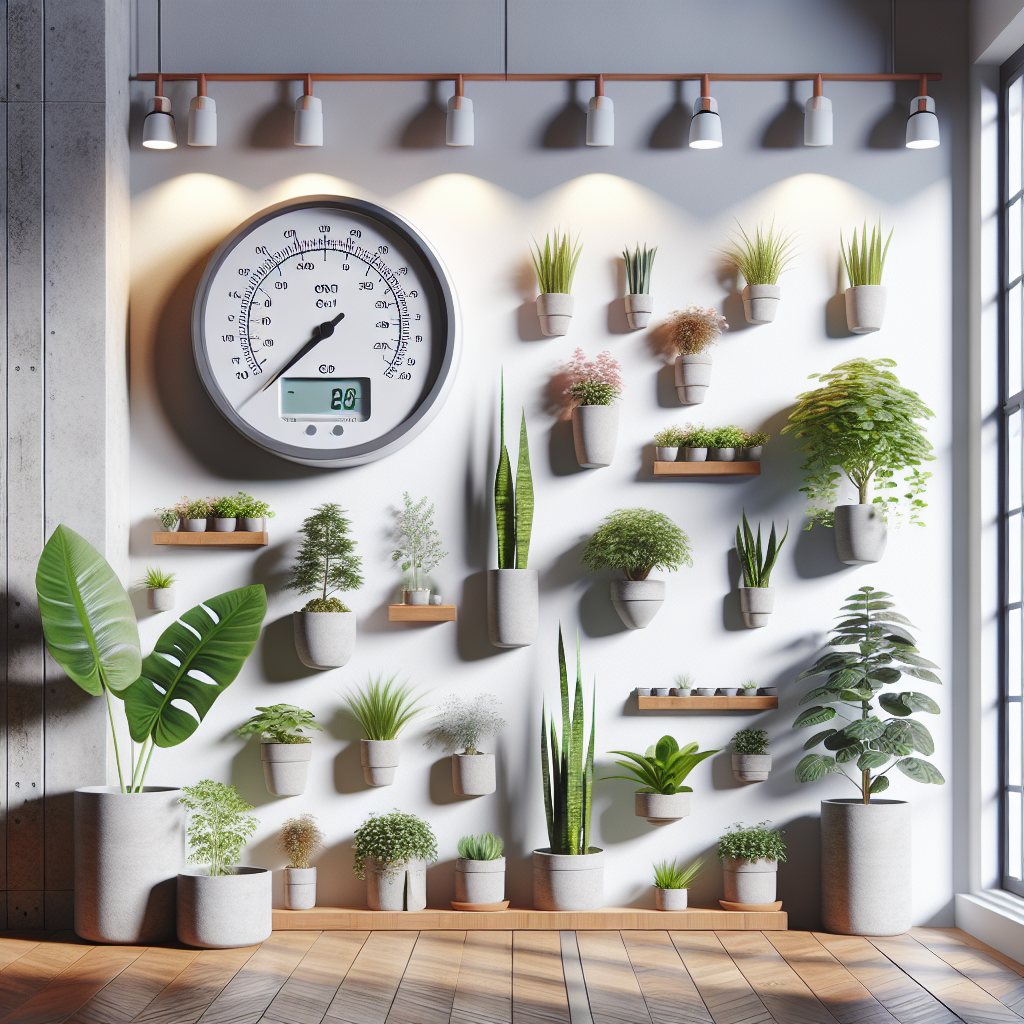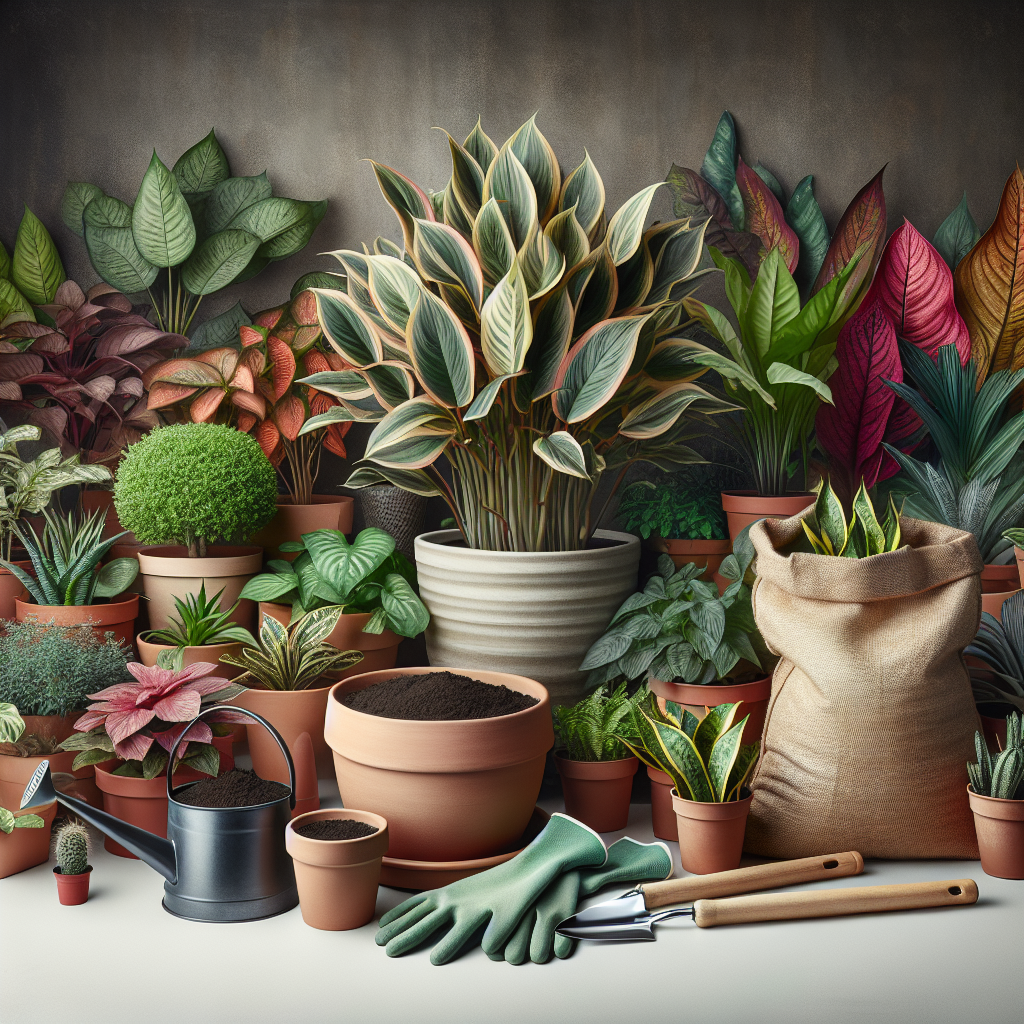Choosing the Right Soil for Indoor Plants
Published January 5, 2024 at 4:48 pm

Understanding Soil Composition for Indoor Plants
Starting your journey in the indoor gardening world can be equally exciting and daunting. With the variety of plants to choose from, it’s imperative to understand that each has its unique needs, especially when it comes to soil. Soil is not just dirt; it’s a mix of minerals, organic matter, microorganisms, and more that provides the life support system for your indoor botanical companions.
The right soil mix helps to regulate the water, supply nutrients, and support root growth. Indoor plants usually thrive in a commercially prepared potting mix specifically designed for indoor use, not the heavy, clay-rich soils found in outdoor gardens. These potting mixes are formulated to hold moisture without becoming waterlogged, which is critical in avoiding root rot.
Considering Key Soil Properties
To determine the best soil for your indoor plants, you need to consider a few key properties, such as drainage, water retention, pH balance, and nutrient content. Let’s break these down:
- Drainage: The aeration in the soil which prevents over-saturation and root rot.
- Water Retention: The soil’s ability to hold water, ensuring that your plants stay hydrated.
- pH Balance: A measure of acidity or alkalinity which needs to be suitable for the type of plant you’re growing.
- Nutrient Content: The levels of essential nutrients like nitrogen (N), phosphorus (P), and potassium (K) which plants need to flourish.
Finding the right balance is crucial, and often this balance is achieved by adding elements like perlite, vermiculite, or sand to improve aeration and adjust water retention to suit the specific needs of your plant.
Finding the Perfect Soil Mix
A soil that’s right for a succulent might not be suitable for a fern. Succulents prefer a well-draining, sandy soil that doesn’t retain much moisture, while ferns would thrive in a moister, nutrient-rich mix. Many commercial potting soils come premixed for various types of plants and often carry titles like “Succulent and Cactus Mix” or “African Violet Mix,” which gives you a handy clue as to which plants they best support.
One such popular choice is the Miracle-Gro Indoor Potting Mix. Designed specifically for indoor plants, this mix is known for being easy to water–not too slow, not too fast–and sufficiently dense to support root structure, yet light enough to allow air flow. Based on reviews, users appreciate that this mix comes with added nutrients, reportedly leading to more robust growth and healthier plants. However, some users noted that the mix retains moisture a tad too well, which might not suit all plant types.
Find This and More on Amazon
Customizing Soil Blends
For those who love a DIY approach, creating your own soil blend can be a rewarding endeavor. It may seem complicated at first, but understanding the components involved can simplify the process. Sterilized potting soil can serve as the base, to which you add other elements depending on the needs of the plants:
- Perlite improves drainage and reduces soil density.
- Sphagnum Peat Moss helps retain moisture and aids in root development.
- Orchid Bark is excellent for tropical plants that need loose, breathable soil.
- Activated Charcoal can improve drainage and remove toxins from the soil.
- Coconut Coir, a sustainable peat moss alternative, provides excellent water retention and re-wets easily.
Keep in mind that adding too much of any one ingredient can have adverse effects. It’s about finding the right mix that will let your plants’ roots breathe while still holding onto the moisture they need. If you’re unsure, experiment with small batches until you find the perfect mix that makes your greenery thrive.
The Importance of Re-potting with Fresh Soil
Over time, soil can become compacted and depleted of nutrients, which can stifle your plant’s growth. This is why it’s essential to refresh the soil periodically by re-potting your plants. The frequency depends on the plant’s growth rate; some may require annual re-potting, while others only need it every two to three years.
When you do re-pot, take the opportunity to examine the roots. If they’re circling the bottom of the pot, it’s an indication that your plant was trying to escape the confines of its old space. A larger pot and fresh soil will give your plant a new lease on life.
Monitoring Soil Health
Beyond merely choosing the right soil, it’s important to regularly check its condition. A soil moisture meter is a tool you can use to ensure you’re not over- or under-watering your plants. Consistent soil moisture levels, depending on the plant type, are key to avoiding issues such as root rot or dry, wilted plants.
Additionally, observing changes in your plant can provide insight into soil health. Yellowing leaves may signify overwatering or poor drainage, while slow growth could indicate a lack of nutrients. Adjusting your soil composition or adopting a fertilizing schedule can often rectify these concerns.
Assessing Specific Plant Needs
Once you understand the general properties of soil, it’s time to match them with the specific requirements of your indoor plants. A cactus, for example, will need a significantly different soil blend compared to a leafy tropical plant. These specific needs should guide your choice of soil, ensuring optimal growth and health for your plant:
- Cacti and Succulents: These plants require soil with excellent drainage that mimics their natural arid environments. Look for a mix containing sand or grit and a high perlite content that prevents water retention.
- Orchids: Orchid mixes often contain bark, charcoal, and perlite, allowing for the air movement and drainage these air plants need.
- Peace Lilies and Ferns: A loamy, peat-rich mix with good moisture retention suits these plants, which thrive when the soil is consistently moist. However, make sure it still has the drainage capabilities to prevent waterlogging.
- Aroid family plants, like Monstera and Philodendron: A mix that’s high in organic matter and has chunky pieces for air pockets is beneficial for the expansive root systems of these popular indoor plants.
It helps to research your plants’ natural habitats and try to replicate those conditions to some extent. Remember, the more closely your soil’s characteristics match the needs of your plants, the more they will flourish.
Popular Soil Mix Brands and Reviews
While creating your mix from scratch is an option, for many indoor gardeners, ready-made soil mixes are a convenient and reliable choice. Here’s a look at some established brands and products:
Black Gold All Organic Potting Soil is often recommended for general indoor plant use. This product includes a mix of pumice, earthworm castings, compost, and forest humus to create a nutrient-rich, well-draining soil right out of the bag. Users have observed improved plant vigor and growth after switching to this soil. However, some reviews suggest keeping watch for fungus gnats, which can occasionally be found in organic soils.
Find This and More on Amazon
FoxFarm Ocean Forest Potting Soil is another go-to for its fine blend of sea-going fish and crab meal, bat guano, and earthworm castings. It offers good drainage and is particularly rich in nutrients. While ideal for rapid growth and blooming plants, it is important to consider its high nutrient strength when using with seedlings or sensitive plants.
Adapting Soil to Environmental Conditions
The environment within your home is just as crucial as your choice of soil. High humidity, temperature, light levels—they all play roles in how soil behaves. A soil mix that works wonders in a humid, warm climate may not perform well in a dry, cooler home. You may need to tweak the moisture retention properties or add more aeration additives like perlite or pine bark, especially if your home has particularly low or high humidity.
It’s also worth noting that different rooms within the same home can have distinct microclimates. For example, a bathroom typically has higher humidity levels than a living room. Recognize the environment your plants live in and adjust your soil mix accordingly.
Understanding the Role of Fertilizers
While a good soil mix will provide an excellent start for your plants, over time, the nutrients will be consumed, and you’ll need to replenish the soil with fertilizers. Finding the right fertilizer can be just as important as selecting the right soil. It is typically recommended to use a balanced, water-soluble fertilizer diluted to half-strength, especially if you’re fertilizing regularly.
Organic fertilizers release nutrients slowly as they break down, which provides a sustained supply. Synthetic fertilizers, on the other hand, are available to the plants immediately but can build up salts over time. Routinely flushing the soil with water can help mitigate salt accumulation from fertilizers. Always follow the recommendations for your specific plants and remember that it’s possible to over-fertilize, which can damage your plants.
Troubleshooting Soil Problems
Even with the best preparations, you may encounter issues from time to time. It’s crucial to understand how to troubleshoot problems as they arise:
- Overly Wet Soil: If your soil seems perpetually soggy, consider mixing in more perlite, or switching to a soil with better drainage properties.
- Dry, Hard Soil: It can be a sign that the soil is too compact or that it is hydrophobic. Mixing in peat moss or coir can help retain moisture.
- Pests: Fungus gnats, a common problem, can indicate that the soil is too moist or that there is too much organic matter. Adjusting watering habits or changing the soil entirely may be necessary.
- Nutrient Deficiencies: Manifested by symptoms like yellowing leaves or slow growth, nutrient deficiencies can be solved by choosing a richer soil mix or by incorporating fertilizers.
By being vigilant and proactive with soil management, you’re setting your indoor garden up for success. Don’t be discouraged by setbacks; consider them learning opportunities to fine-tune your soil selection and care practices.
Expert Tips on Watering Practices for Indoor Plants
Proper watering practices are integral to the health of your indoor plants, and they go hand-in-hand with choosing the right soil. Since good soil should manage moisture effectively, understanding how to water correctly becomes the next piece of the puzzle. If you water too little, plants dry out, but if you water too much, even the best soil can become waterlogged. It’s all about balance and knowing what your plants need.
A rule of thumb is to water when the top inch of soil feels dry. This can vary depending on the plant species and the environment in your home. Some seasoned gardeners swear by the ‘soak and dry’ method, which involves thoroughly drenching the soil and then allowing it to dry out completely before the next watering. This mimics natural rainfall patterns and can lead to stronger, more resilient root systems.
Don’t forget seasonal changes can affect watering schedules. Plants typically need more water during their growing seasons, usually spring and summer, and less during the dormant fall and winter months. Keep an eye on your plants and adjust as necessary.
Choosing Containers and Pots that Complement Your Soil Choice
The relationship between pots and soil shouldn’t be underestimated. Good soil can be rendered ineffective if it’s in the wrong container. The material of your pot, its size, and even the presence of drainage holes can greatly influence how soil behaves.
For most houseplants, pots with drainage holes are non-negotiable. They allow excess water to escape, preventing root rot. If you’re one to over-water or if you’re growing a plant that prefers drier conditions, terra cotta pots are helpful as they wick away moisture and let the soil breathe. On the other hand, plants that enjoy more moisture might fare better in plastic or glazed ceramic pots that retain water longer.
Selecting the right size pot is also key. A pot that’s too large will hold too much soil and consequently too much moisture for the roots to use, leading to damp conditions that could cause root rot. A pot that’s too small will quickly become root-bound. It’s often best to repot a growing plant into a container only one size larger than its previous one. This keeps the balance just right between soil volume, moisture levels, and root space.
Going Beyond Just Soil: The Role of Mulching in Indoor Gardening
While not always considered for indoor plants, mulching can play a beneficial role in maintaining soil moisture and temperature. A layer of mulch on top of the soil can help to reduce the evaporation rate, keeping the soil moist for longer. It can also protect the soil surface from the impact of watering, preventing soil compaction.
Organic mulches like coco coir, bark chips, or even decorative stones not only conserve moisture but can add an aesthetically pleasing touch to your indoor plants. Keep mulch an inch away from plant stems to prevent any potential rot and replace organic mulches once they start decomposing to maintain their effectiveness.
Empowering Your Indoor Garden with the Right Soil Additives
Incorporating soil additives can significantly influence the performance of your indoor plant soil. Depending on your plants’ needs, you might consider adding certain nutrients or materials that can enhance growth and overall health. A common additive is compost, which enriches the soil with a wide range of nutrients and microorganisms, or you might consider bone meal to provide high levels of phosphorus for flowering plants.
Another additive that is often recommended is mycorrhizal fungi. These beneficial fungi form a symbiotic relationship with plant roots, helping them absorb more water and nutrients from the soil. Adding mycorrhizal fungi to your potting mix could be the edge your plants need for enhanced vitality and growth.
Navigating the World of Hydroponics for Indoor Gardening
Some indoor gardening enthusiasts are taking soil out of the equation entirely and turning to hydroponics – growing plants in a water-based, nutrient-rich solution. Hydroponics systems can vary from simple wick systems to more complex deep water culture arrangements, but they all focus on providing plants with what they need directly to their roots without the use of soil.
While hydroponics may not be for everyone, it does offer some benefits. It eliminates soil-borne diseases and pests, provides plants with optimal nutrient levels, and allows for greater control over the growing environment.
If you’re interested in experimenting with hydroponics, start with a simple system and a plant known to do well in water, such as lettuces or herbs. It’s a great way to expand your indoor gardening skills and experience the joy of growing plants in a new way.
Final Thoughts: Embracing the Trial and Error of Indoor Gardening
As with any area of plant care, finding the right soil for indoor plants is often a journey of trial and error. What works for one plant or one gardener might not work for another. The key is to stay informed, be observant, and be willing to adjust your methods as you learn more about your plants’ preferences.
Remember that indoor gardening is a personal experience and a process of discovery. Embrace the learning curve, celebrate your successes, and learn from any setbacks. With patience and attention to detail, you can create a thriving indoor oasis that brings greenery and joy into your home.
Shop more on Amazon

